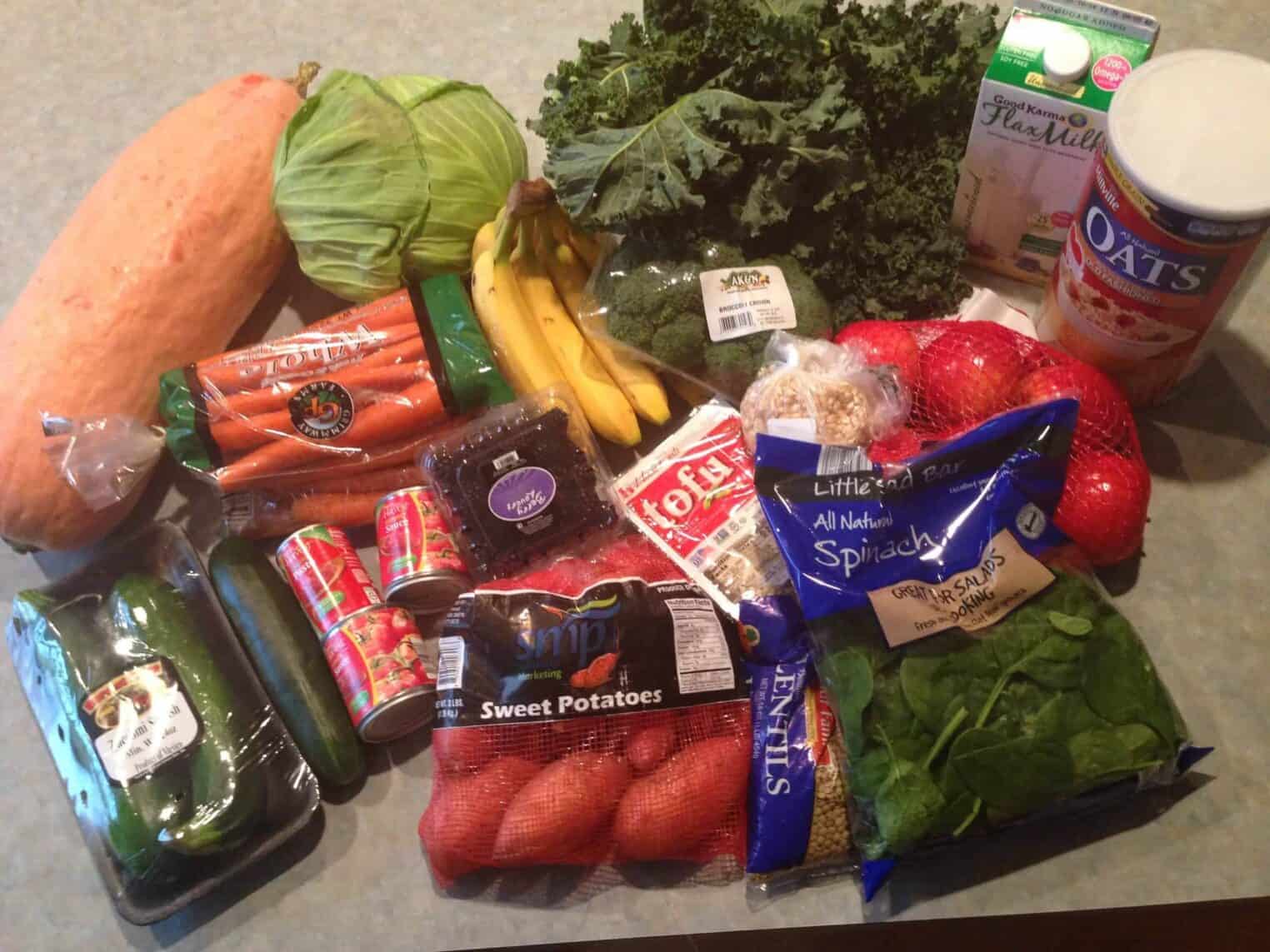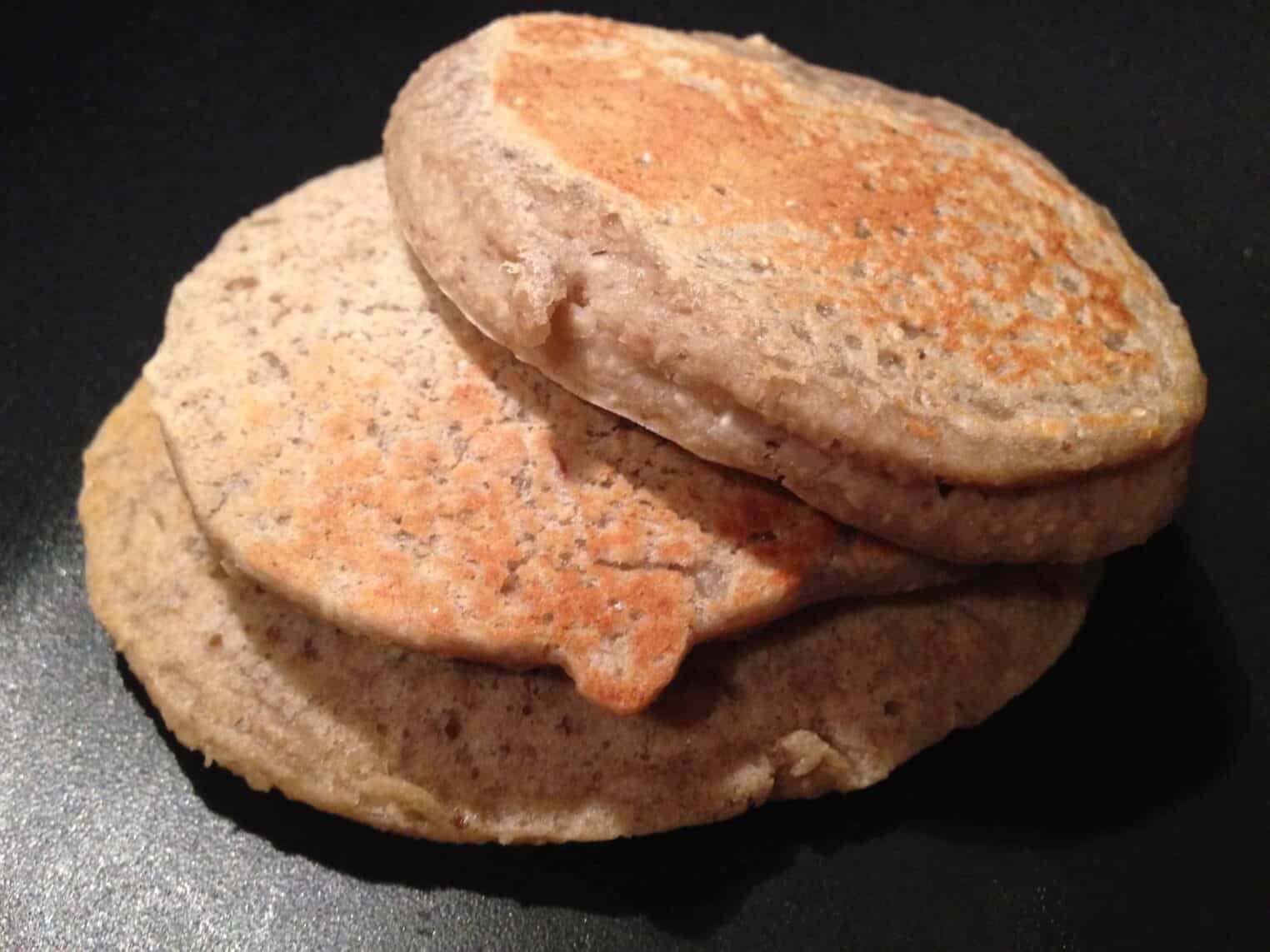Healthy Eating on $4.50 a day
I am so excited to share with you today’s guest post on one of my favorite topics- eating a plant-based diet on just $4.50 a day. Because, let’s face it- even though we all strive to eat well, eating healthy on a budget can be a huge obstacle to getting there. Especially on a plant-based diet, there seems to be a stigma that’s it’s only for the wealthy and/or elite foodie crowd (we remember Gwynth’s $300 a day recipes). Today we are proving just the opposite. My fellow RD and friend Kristina DeMuth is here to discuss her experience following a whole food, plant based diet on just $4.50 a day. Enjoy!
Several months ago, I participated in the SNAP challenge along with other dietitians in the profession. It was a weeklong experiment to see what it would be like to live off of $4.50 worth of food per day.
I decided to take the SNAP challenge because I spent a year living in Haiti, and came home wanting to learn more about the hunger that exists here in my home country. I am passionate about walking along side people in their daily struggles and helping them to obtain optimal nutrition with the resources that they have. Doing the SNAP challenge for 1 week will never equate to the experience of people on SNAP benefits; however, engaging in the week activity provided me a window of insight to various challenges people might face living on tight budget here in America. I also wanted to see if it was possible to consume an entire whole, plant-based diet on less than $4.50 per day. Well it turns out, I only consumed about $25 worth of food for the week; this was about $3.57 per day!
You might be thinking, “Gosh this girl must have been starving!” especially considering that $3.50 is equivalent to buying a drink at Starbucks or a meal deal at a fast-food restaurant. To tell you the truth, I only felt food “insecure” and hungry for the first day or two of the challenge! It was primarily because I was worried about how I was going to make all my food last until day seven. Shockingly, I ended-up with extra food after completing my SNAP challenge; I had exactly 2 veggie-burgers, 3 “bean-balls”, enough soup for maybe 4-5 more meals, and 1/3 of a container of oats (~ 5-6 more servings) leftover!
My Shopping Experience:
Shopping for the challenge was exciting when I found great deals, but it was also mentally exhausting— trying to decide which foods to buy, if I had enough money, trying to prioritize my food list. Writing a list was helpful for making sure I ended up with everything I absolutely needed, and thankfully, I managed to get every item on my list!
I went to three locations to get groceries. I went to Aldi first, were I did find some awesome deals on fresh produce like apples, carrots, spinach, zucchini, bananas, sweet potatoes, and cucumbers. I also bought canned tomato sauce and paste, as well as a large container of oats. I bought kale for a $1/ bunch at the Famers Market, and had money to left to buy a cabbage and a huge squash! I purchased the remained of my list (lentils, popcorn seeds, and plant-based milk) at the co-op near the Farmers Market. I also ended up using peanut butter from home that was factored into my expenses.
My Week’s Experiment:
I chose to eat entirely from scratch to resemble my typical dietary intake. Cooking foods from scratch can save an extraordinary amount of money, however, it does require some basic skills about cooking/ baking, resources for preparing/ storing foods, and the confidence to try new things. I realize a number of these can be limitations for people. I think there is a common belief that cooking from scratch takes more time. Well, it can. However, I found that some of my dishes, such as the overnight oats, lentil and sweet potato, and banana pancakes, to be fairly quick meals. Also, I precooked a large batch of lentils that were used throughout the week to save time and make meal prep go faster. I also made large batches of my dinner meals, such as the soups and veggie burgers, so that I would always have quick, pre-made lunches.
The following are foods I ate throughout my challenge:
Breakfast: oatmeal banana pancakes with peanut butter (below pic), overnight oats with banana and peanut butter, and a sweet potato oatmeal casserole.
Snacks: Almost daily, I ate carrots, apple, and roasted pumpkin seeds (saved those from my squash). I also used leftover squash that I froze to make pumpkin “ice cream” on 3 of the days, as well as made homemade air-pop popped corn on 4 days.
Lunch/ Dinner: Lunch was typically leftover meals from the night before. I made “creamy” tomato soup (made with tofu); pumpkin soup; veggie burgers with a side of baked sweet potato fries and roasted veggies; lentil-oat “meatballs”; carrot-ginger soup; a lentil apple and sweet potato dish with veggies and peanut butter. Many of these dishes were just modified meals of what I currently eat!
My Lessons Learned/ Perspectives Gained:
When eating on a budget it helps to know where to shop, take advantage of farmer’s markets, and to menu plan/ write out lists before making purchases. Whenever possible, buy things in bulk and buy dry beans and seeds. For people using SNAP benefits, they might face more difficulties finding places that accept SNAP or even the transportation to get to places that offer a variety of healthier food options. Thankfully, in the Minneapolis, MN area (where I am from) many of the farmers markets accept EBT (SNAP benefits) and have great deals on produce throughout the summer. Winter months make things a bit more challenging.
I realized during the challenge that I didn’t have anyone else’s taste preferences to cater to, which made things much easier. However, I think it would have been better to pool money with a friend or family member to increase the variety of food choices for the week. It would have made it easier for cooking/ prep duties, as well as working together to generate ideas about foods to make with our resources.
I ate incredibly healthy and at a very low cost, which was shocking to me! I ate 3-5 times per day and felt comfortably full throughout majority of my experience! If I were to do this longer and differently, I would have incorporated more variety of grains and beans, as well as chia seeds and nutritional yeast into my menu plan.
The cost of plant-proteins versus organic animal-based proteins is much more cost-effective. A serving of lentils costs 10 cents (13 grams of protein), organic quinoa costs 30 cents/ serving (6 grams of protein), edamame costs about 50 cents per serving (13 grams of protein). Eating more economical protein increases the amount of money that can be spent on fruits and vegetables. When I read about a focus group done with 92 low-income women, I was blown away that many women in the study reported spending nearly 50% of the family food- budget on meat! Also, many women in the focus group viewed vegetables and fruit as “expensive” (Wiig & Smith, 2008) I am sure this is all relative to where people live and what they are buying. However, swapping out meat for beans can save an extraordinary amount of money and, therefore, free up food-budget costs that can be used to buy fruits and vegetables.
The folks at plant-based on a budget really inspired me throughout my challenge with all of the tasty creations they are able to make on $25 worth of food for a week. I find it incredible how people are all coming together to share recipes, tips for getting cheap food, and encouraging more and more people to cook, eat plant-based, and be healthy…. On a budget!
In good health,
Kristina DeMuth
Registered Dietitian
Masters of Public Health Candidate
Find me on Twitter and Facebook!




